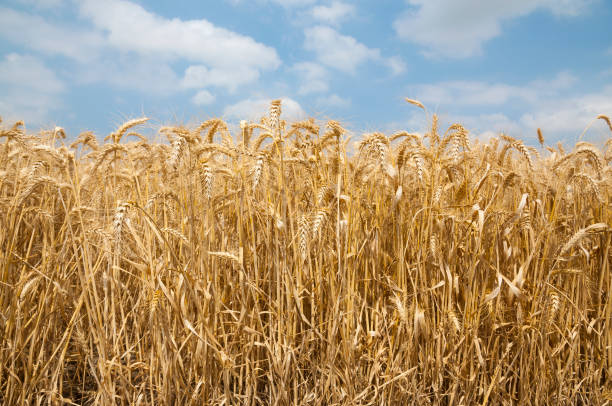Crop yield prediction plays a crucial role in modern agriculture. With the growing demand for food and the challenges posed by climate change, accurately forecasting crop yields can help farmers, agricultural businesses, and governments plan and manage resources more effectively. Predicting the amount of crops that will be harvested allows for better supply chain management, timely distribution, and financial planning. In this article, we will explore the importance of crop yield prediction, the tools used, and the techniques involved in making accurate predictions.
Why is Crop Yield Prediction Important?
Accurate crop yield prediction is important for several reasons. It helps farmers make informed decisions regarding resource allocation, such as water, fertilizers, and labor. It also allows governments and agricultural agencies to plan for food security, distribution, and storage. Moreover, yield prediction can guide market pricing, especially for high-demand crops, helping businesses prepare for fluctuating supply and demand.
With the increasing unpredictability of weather patterns due to climate change, accurate forecasting becomes even more critical. Early yield predictions help mitigate the risks posed by extreme weather events, such as droughts or floods, by enabling preemptive measures to protect crops and ensure food supply.
Tools Used for Crop Yield Prediction
The tools used for crop yield prediction have evolved significantly over the years. From traditional methods to advanced technology, several tools help in the prediction process:
1. Satellite Imagery and Remote Sensing
Satellite imagery and remote sensing are among the most common and effective tools used for crop yield prediction. These technologies collect data on crop growth and environmental conditions from space. By analyzing this data, experts can estimate crop health, moisture levels, and growth patterns.
Remote sensing systems, such as the Moderate Resolution Imaging Spectroradiometer (MODIS) or Landsat satellites, capture images of agricultural regions and provide valuable information on vegetation indices, such as the Normalized Difference Vegetation Index (NDVI). These indices help assess crop vigor and predict yields by identifying stressed areas and monitoring the overall health of crops.
2. Weather Data Models
Weather data plays a significant role in crop yield prediction because environmental conditions—such as temperature, precipitation, and humidity—directly impact crop growth and development. Climate models that analyze historical weather data alongside current forecasts help in predicting future yield.
Weather stations and meteorological data are now integrated into predictive models that take into account seasonal variations and extreme weather events. By understanding the correlation between weather patterns and crop growth, these models allow farmers to forecast yield more accurately, adjusting farming practices as needed.
3. Drones and UAVs (Unmanned Aerial Vehicles)
Drones have become a popular tool for farmers to monitor their crops in real-time. Equipped with high-resolution cameras and sensors, drones can fly over fields and capture detailed images that provide valuable insights into crop health, pest infestations, and overall crop growth.
UAVs are capable of collecting data at a very localized level, enabling farmers to identify issues at the earliest stages. By analyzing the images taken by drones, farmers can predict crop yield more precisely, taking into account soil conditions and other growth variables that might affect production.
4. Crop Modeling Software
Crop modeling software is another essential tool for accurate crop yield prediction. These models use data on weather, soil health, and historical crop performance to simulate how a crop will perform under varying conditions. They can predict yield for different types of crops and regions, helping farmers plan ahead.
Software such as DSSAT (Decision Support System for Agrotechnology Transfer) and APSIM (Agricultural Production Systems Simulator) are commonly used tools that simulate crop growth and development. These models incorporate various parameters such as soil fertility, temperature, and water availability, making them powerful predictors of crop yield.
5. Machine Learning and AI
Artificial intelligence (AI) and machine learning have revolutionized the field of crop yield prediction. By analyzing vast amounts of historical data—ranging from weather conditions and soil types to crop varieties and yield statistics—machine learning algorithms can make highly accurate predictions.
These models can identify complex patterns that are difficult for humans to recognize, enabling more precise forecasting. By learning from past data, AI systems continuously improve their predictions, helping farmers and agricultural businesses make more informed decisions and increase productivity.
Techniques for Accurate Crop Yield Prediction
To make accurate crop yield prediction, several techniques are employed, often in combination with each other. These techniques rely on data analysis, advanced technology, and a deep understanding of agricultural processes.
1. Data-Driven Predictions
Data-driven approaches rely on gathering large amounts of data through various sources like satellites, weather stations, drones, and sensors. The more data collected, the more accurate the predictions tend to be. The data is then analyzed using statistical and machine learning techniques to estimate the crop yield.
For example, data such as rainfall levels, soil temperature, and crop growth stages can help predict how crops will perform at the end of the season. Statistical methods such as regression analysis are often used to establish correlations between environmental factors and crop yield, providing more reliable predictions.
2. Crop Simulation Models
Crop simulation models take environmental and agronomic factors into account to simulate crop growth. By inputting data such as soil properties, temperature, and rainfall, these models can simulate different growing scenarios and predict how crops will behave under various conditions.
For instance, if a farmer is considering planting a new variety of maize, a crop simulation model can predict how that crop will perform based on the current climate and soil conditions. These models help farmers choose the best variety and agricultural practices for maximizing yield.
3. Remote Sensing and Visual Assessment
Remote sensing tools, such as satellite imagery, drones, and UAVs, provide a unique perspective of crop health and growth. By continuously monitoring crops throughout the growing season, these tools enable real-time assessment of crop conditions.
The data collected can be analyzed to estimate yield potential based on visual indicators such as canopy cover, leaf color, and crop stress levels. Remote sensing allows farmers to identify areas of the field that require more attention, helping them make adjustments early on to improve yield outcomes.
Conclusion
Accurate crop yield prediction is a cornerstone of modern agricultural practices. By using advanced technologies such as satellite imagery, drones, machine learning, and crop modeling software, farmers can predict yield more accurately and optimize their operations accordingly. The tools and techniques available today enable better resource management, reduce waste, and increase food security.
As technology continues to evolve, the future of crop yield prediction looks promising, with even more advanced and precise methods being developed. By integrating these tools, farmers can make more informed decisions, improve productivity, and navigate the challenges of modern farming with greater success.





